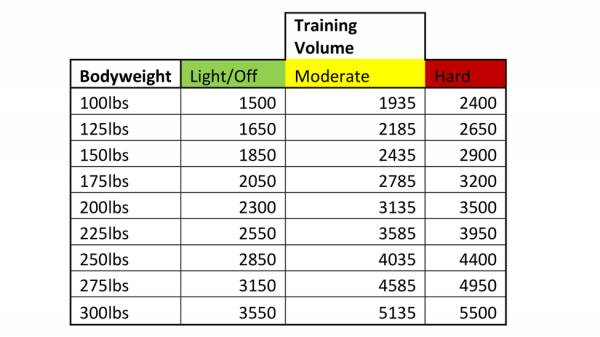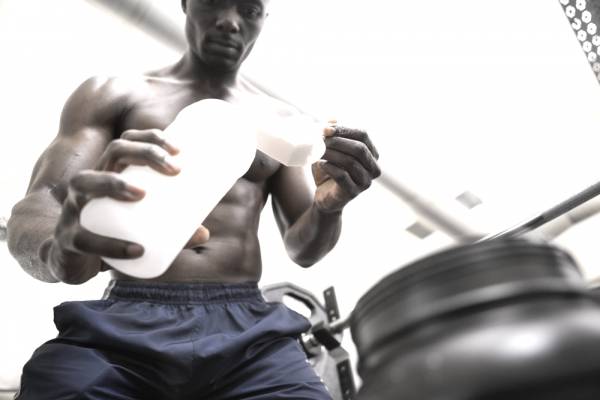If you don’t understand calories, macronutrients, and the value of whole foods, you’ll never progress from average Joe to elite athlete. Unfortunately, misguided dietary recommendations and a lack of understanding by athletes of all levels contribute to widespread confusion about the best way to eat for performance.
These seven simple guidelines will allow you to adjust your nutrition to meet the demands of intense training.
1. Simplify Your Daily Meal Template
Simplify your nutrition and understand performance nutrition pillars to create a blueprint for increased power, strength, lean muscle, and health. We tend to over-complicate nutritional strategies instead of developing our own personalised profile over time. Here are two simple daily tips for better performance:
- Meal Spacing: Fasting, dietary restrictions plans, and all that jazz aside, athletes need to be feeding for physiological growth, fueling for training sessions, and recovering through nutrition. To determine meal spacing, take the number of waking hours you have each day and divide that by two or three hours. For example, an athlete who sleeps six hours a day should be eating about 6-9 times per day (and get more sleep).
- Calorie Splits: Split your calories across each meal based on proximity to workouts. Pre-training, intra-training, and post-training meals should be richer in carbohydrates and protein. The other three meals (breakfast, lunch, and dinner) can be more balanced in terms of macronutrient distributions. Add a few snacks throughout the day to increase caloric intake if need be, and stay consistent with your plan.
Eating a variety of whole, natural foods will provide your body with the nutritional support it needs to perform at a higher level.
2. Diversify Your Plate for Better Health
One of the best ways to diversify nutrition and increase your health and performance is to eat foods that are closest to the earth. Foods that are consumed closest to their original form tend to be the best options. These include:
- Brightly coloured fruits
- Vibrant vegetables
- Animals and fish
- Grains
- Nuts and seeds (butters too)
- Fats (MCTs, animal fats)
As you move further away from the natural form, you see processed sugars, salts, and and preservatives. The more steps and ingredients that went into making your food, the less ideal it is.
3. Calories Are King
It’s quite simple. Eat more to get bigger and eat less to get smaller. Too often we neglect the basic principles of energy surplus and energy deficit.
The human body is an amazing specimen. We have the ability to transfer any food source (fat, carbohydrate, and protein) into a single molecule that can be used for energy transfer. Regardless of what is left for the body to use, it can and will produce energy from any one of those sources.
Understanding your caloric needs is based on your resting metabolic rate, current body leanness, training frequency, and goals. Try this calculatorout to establish your daily caloric needs. Or determine your daily caloric needs from this table. And remember, if you overeat calories, regardless of where they are from, you will gain weight and vice versa.

Estimating your daily caloric needs is essential to your performance. Reference this chart from Renaissance Periodization as a starting point.
Regardless of your specific performance goals, you must first determine your overall calorie intake. Once that is established, you can then fluctuate macronutrients (protein, carbohydrates, and fats) according to your training intensity.
4. Protein, Protein, Protein
Research by Renaissance Periodization suggests that active athletes can synthesise about 0.8-1.0 grams per pound (g/lb) of bodyweight per day. The ideal amount to be consumed at one time is 20-30g of protein.1
How to Calculate Your Daily Guidelines:
- When building your dietary plan for protein, aim for 1g/lb per day.
- Multiply that by 4 (calories per gram of protein) to get your total protein calorie requirement.
- Subtract that number from your total daily calorie goal to determine the correct amount of carbohydrates and fats you will need.
Example:
- 190lb male needs 3,000 calories per day
- 190g of protein/day x 4 calories/gram = 760 calories from protein
- 3000 – 760 = 2240 calories left for carb and fat intake
5. Carbohydrates Are Critical
Performance athletes need carbohydrates. I repeat. Performance athletes need carbohydrates. 2 Carbohydrates serve many functions in optimal performance: 3
- Improved brain function and recovery
- Increased time to fatigue
- Improved muscle recovery
- Improved aerobic capacity (enable fat oxidation)
- Improved high-intensity training performance
- Improved muscular energy
Average gym goers often overlook the importance of carbs for performance. You should aim to consume 1-2g/lb of bodyweight each day. The more intense your training sessions are, the closer to 2g/lb you can eat. On rest days, you can stay closer to 1g/lb or slightly under to keep body fat at bay. Training more than one time per day increases these ranges, so adjust accordingly.
How to Calculate Your Daily Guidelines:
- When building your dietary plan for carbohydrates, aim for a gram per lb/day.
- Multiply that number by 4.
- Subtract that number from your daily calorie goal from above to determine the correct amount of fats you will need.
Example:
- 190lb male x 1-2g of carbohydrates/day x 4 calories/gram = 760-1520 calories
- Already determined 2240 calories left for carb and fat intake
- 2240 – 760 = 1480 calories left for fat intake on rest days
- 2240 – 1520 = 720 calories left for fat intake on intense training days
- For moderate-intensity days, adjust carbs to fall within 1-2g/lb range
6. Fit Fats In
Fats act as energy reserves for long duration exercise. They are energy dense, which makes them key for athletes looking to build muscle while minimiing carbohydrate intolerance and maintaining healthy body fat. Fluctuate your fat intake to match your overall caloric goal once your specific protein and carbohydrate goals are met each day. If you want to gain mass, you can provide the body with enough raw material to promote growth by consuming more fats once your upper limit of carbohydrates is met.
How to Calculate Your Daily Guidelines:
- Find the number of calories you have left after you have accounted for protein and carb intake.
- Divide that number by 9 (calories per gram of fat).
Example:
- 1480 calories left for fat intake on rest days
- 1480 / 9 = 165g of fat per day on rest days
- 720 calories left for fat intake on intense training days
- 720 / 9 = 80g of fat per day on intense training days
7. Use Supplements to Supplement
Most research on over-the-counter supplements has failed to show repeatable proof that the products improve performance. But there are a few time-tested supplements that seem to work well for most athletes.

Use these supplements to increase performance only after your whole foods and training are spot on.
- Whey Protein: Whey protein is an amazing low-calorie source of complete proteins. The availability and convenience of these makes whey protein ideal for athletes struggling to meet their protein requirements. Opt for whey proteins that are low in sugar, preservatives, and fillers. A favourite of mine is a lactose- and gluten-free option with less than 1g of carbohydrate. Mix with water, milk, or coffee and you are ready to go.
- Creatine: Creatine is a quick energy source found in muscle. It has been shown to improve both muscular force output and acute exhaustion from intense training. Simply adding creatine monohydrate could elevate your performance enough to keep your progress going.
- Fish Oils: Omega-3 fatty acids need to be ingested via external food sources, and are vital in increasing muscle strength, performance, and growth. These are essential to all athletes because we cannot produce them ourselves. They strengthen the bones and lungs, improve blood flow, and combat the negative immune effects of intense training. 4
- Greens Supplements and Fibre: Intense training demands higher amounts of vitamins and minerals. Additionally, increased food consumption may impact digestion. Greens and fibre supplements restore normal digestion and aid in muscle recovery.
Eat Like the Athlete You Are
Follow these basic guidelines to take your performance to the next level. Keep in mind, this blueprint is ideal for most athletes without dietary restrictions. If you have special medical considerations, consult a Registered Dietician for more guidance on your individual needs.
Athletes have significantly different metabolic demands than non-athletes. As we develop better fitness, factors such as sleep, recovery, hydration, and nutrition play a determining role in our ability to withstand the increased physiological and psychological stressors of advanced training and life. Nailing down your nutrition will give you the fuel you need to move from amateur to elite.
More Strategies to Fuel Your Fitness:
- Get the Lowdown on Low Carb: Is It for You?
- The Greatest Sports Supplement You Should Be Taking
- 5 Steps to Easy Weekly Meal Preparation
- New on Breaking Muscle AU Today
References:
1. Israetel, Mike. The Renaissance Diet E-book. Renaissance Periodization.
2. Barnett, Jeff. “The Power of Carbs.” Breaking Muscle. Accessed 12 November 2015.
3. Iowa State University Extension. “Role of Carbohydrates.” Accessed 12 November 2015.
4. Ascenta Health. “Omega-3 and Sport: How Fish Oil Is Beneficial for Athletes.” Accessed 12 November 2015.
Photos courtesy of Shutterstock.






